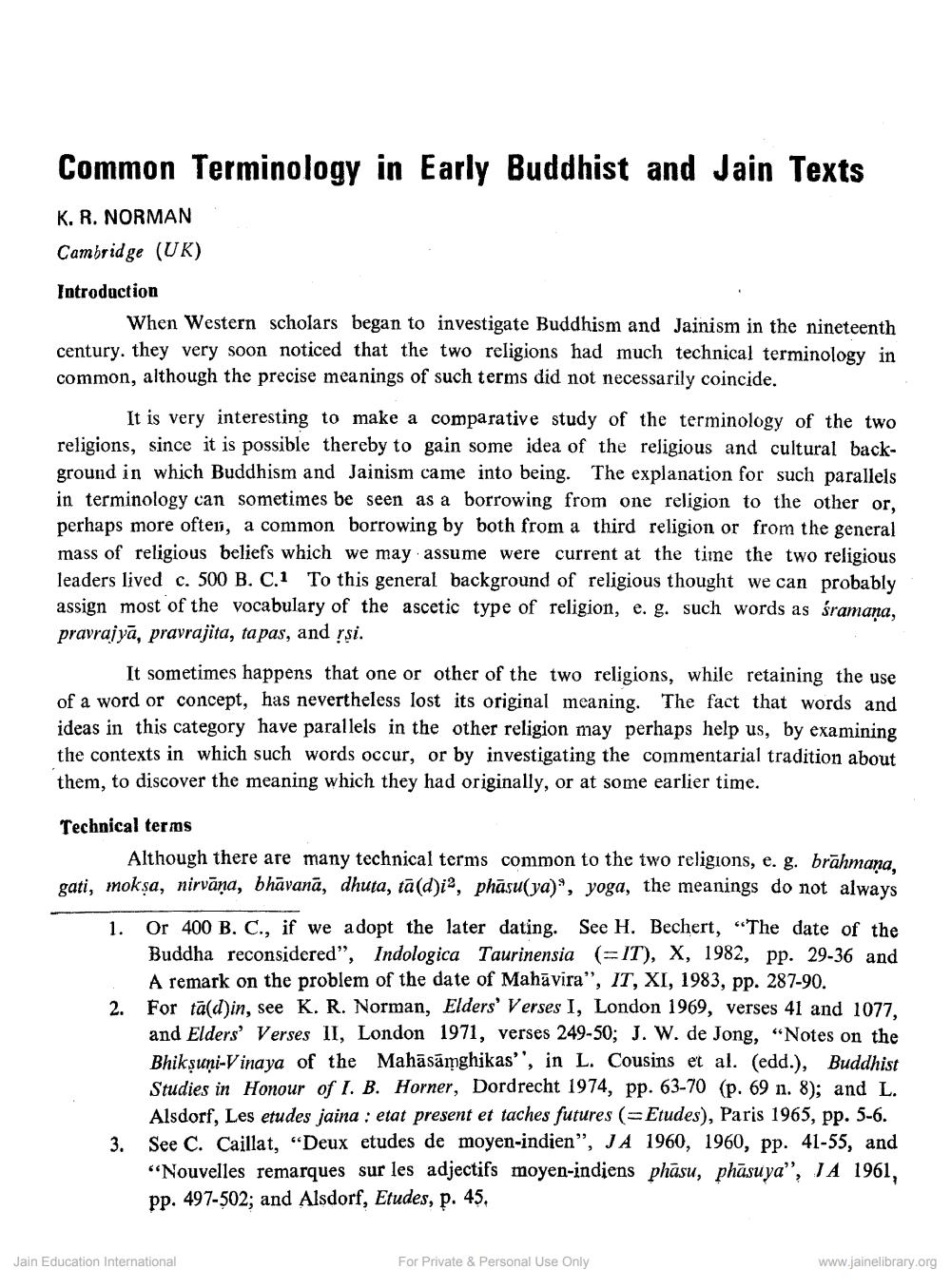________________
Common Terminology in Early Buddhist and Jain Texts
K. R. NORMAN
Cambridge (UK)
Introduction
When Western scholars began to investigate Buddhism and Jainism in the nineteenth century, they very soon noticed that the two religions had much technical terminology in common, although the precise meanings of such terms did not necessarily coincide.
It is very interesting to make a comparative study of the terminology of the two religions, since it is possible thereby to gain some idea of the religious and cultural background in which Buddhism and Jainism came into being. The explanation for such parallels in terminology can sometimes be seen as a borrowing from one religion to the other or, perhaps more often, a common borrowing by both from a third religion or from the general mass of religious beliefs which we may assume were current at the time the two religious leaders lived c. 500 B. C.1 To this general background of religious thought we can probably assign most of the vocabulary of the ascetic type of religion, e. g. such words as áramana, pravrajya, pravrajita, tapas, and ṛsi.
It sometimes happens that one or other of the two religions, while retaining the use of a word or concept, has nevertheless lost its original meaning. The fact that words and ideas in this category have parallels in the other religion may perhaps help us, by examining the contexts in which such words occur, or by investigating the commentarial tradition about them, to discover the meaning which they had originally, or at some earlier time.
Technical terms
Although there are many technical terms common to the two religions, e. g. brahmana, gati, moksa, nirvana, bhavana, dhuta, ta(d), phāsu(ya)", yoga, the meanings do not always
1. Or 400 B. C., if we adopt the later dating. See H. Bechert, "The date of the Buddha reconsidered", Indologica Taurinensia (IT), X, 1982, pp. 29-36 and A remark on the problem of the date of Mahavira", IT, XI, 1983, pp. 287-90.
For ta(d)in, see K. R. Norman, Elders' Verses I, London 1969, verses 41 and 1077, and Elders' Verses II, London 1971, verses 249-50; J. W. de Jong, "Notes on the Bhiksuni-Vinaya of the Mahäsämghikas", in L. Cousins et al. (edd.), Buddhist Studies in Honour of I. B. Horner, Dordrecht 1974, pp. 63-70 (p. 69 n. 8); and L. Alsdorf, Les etudes jaina: etat present et taches futures (=Etudes), Paris 1965, pp. 5-6. See C. Caillat, "Deux etudes de moyen-indien", JA 1960, 1960, pp. 41-55, and "Nouvelles remarques sur les adjectifs moyen-indiens phāsu, phāsuya", IA 1961, pp. 497-502; and Alsdorf, Etudes, p. 45.
2.
3.
Jain Education International
For Private & Personal Use Only
www.jainelibrary.org




